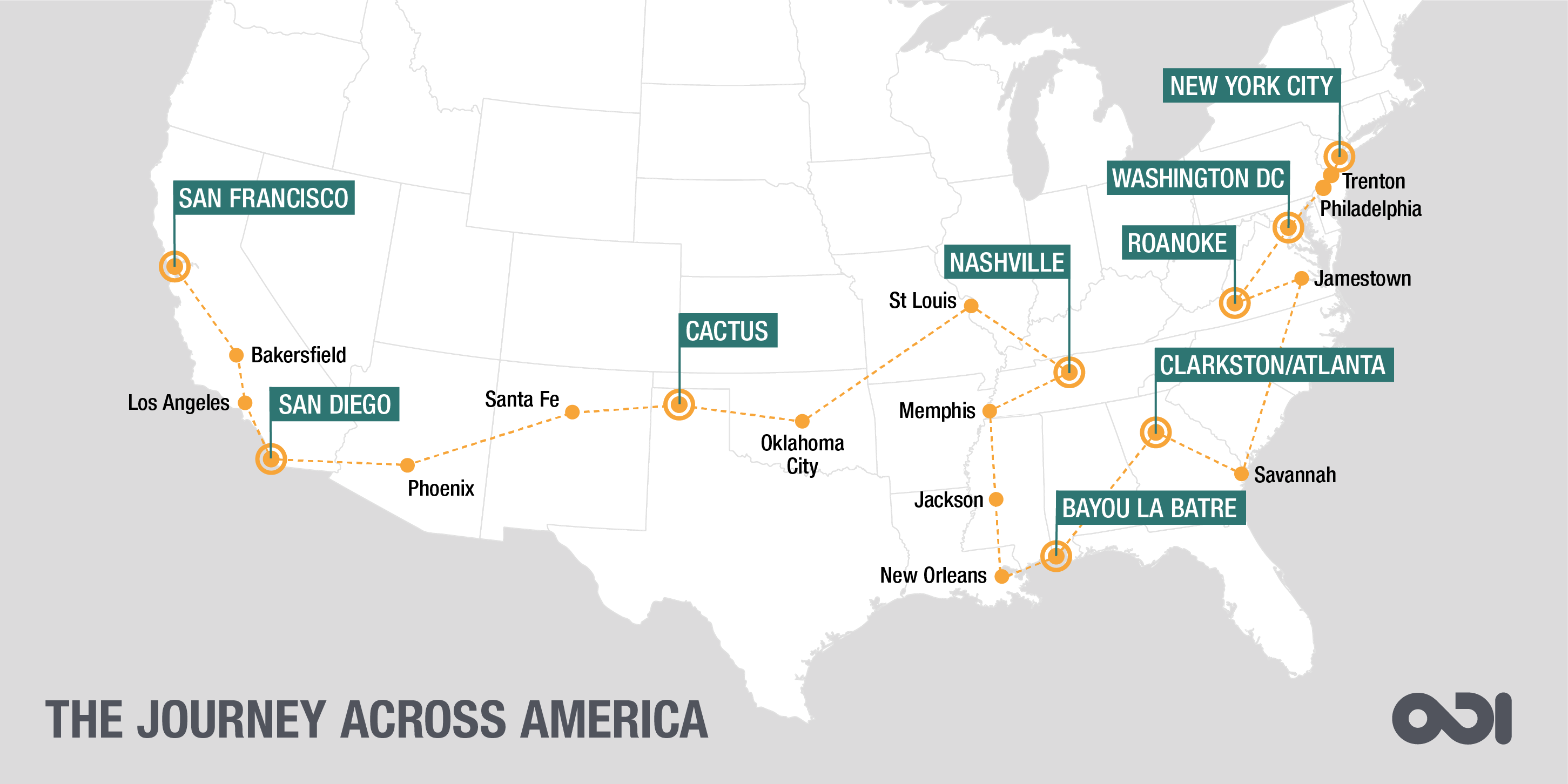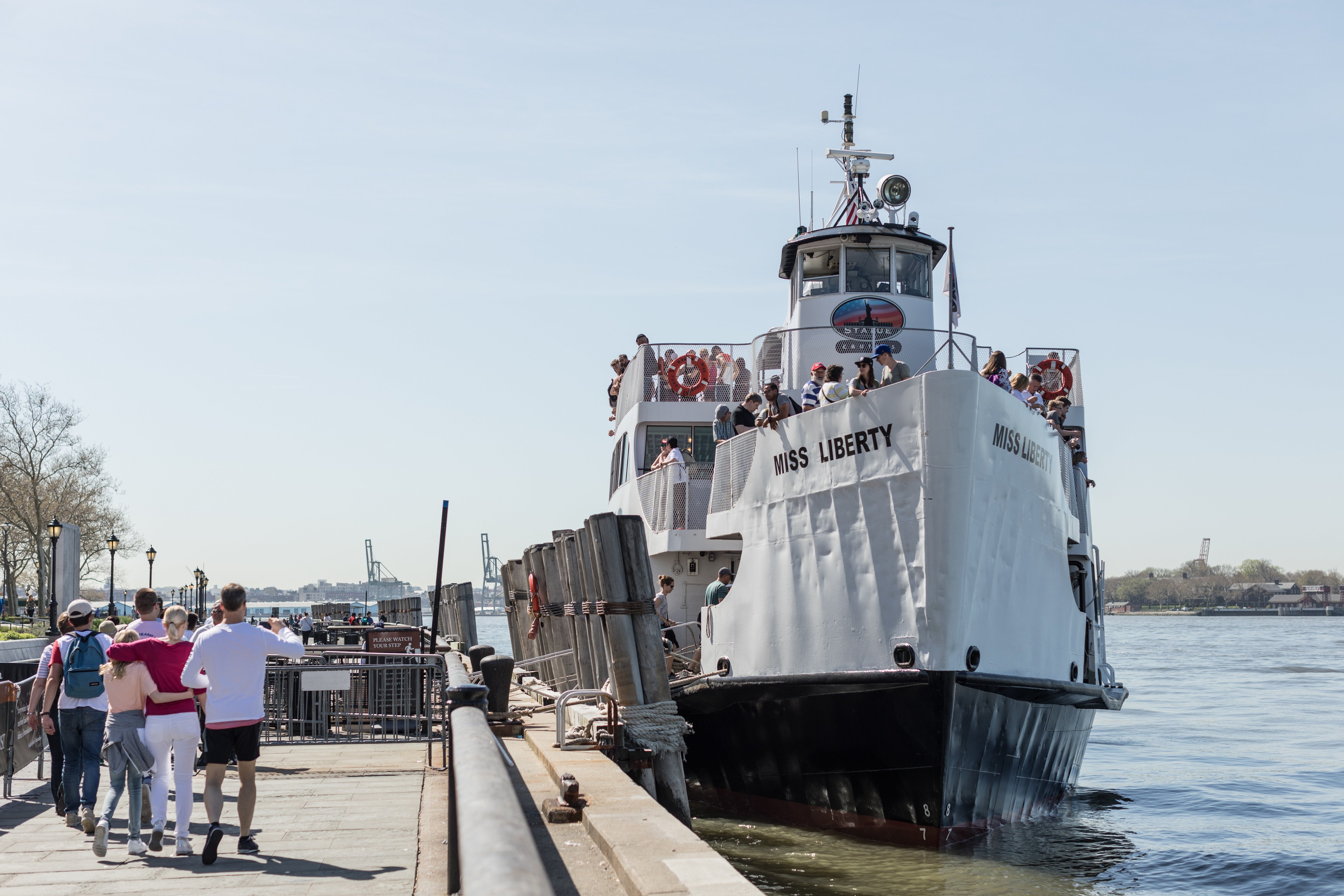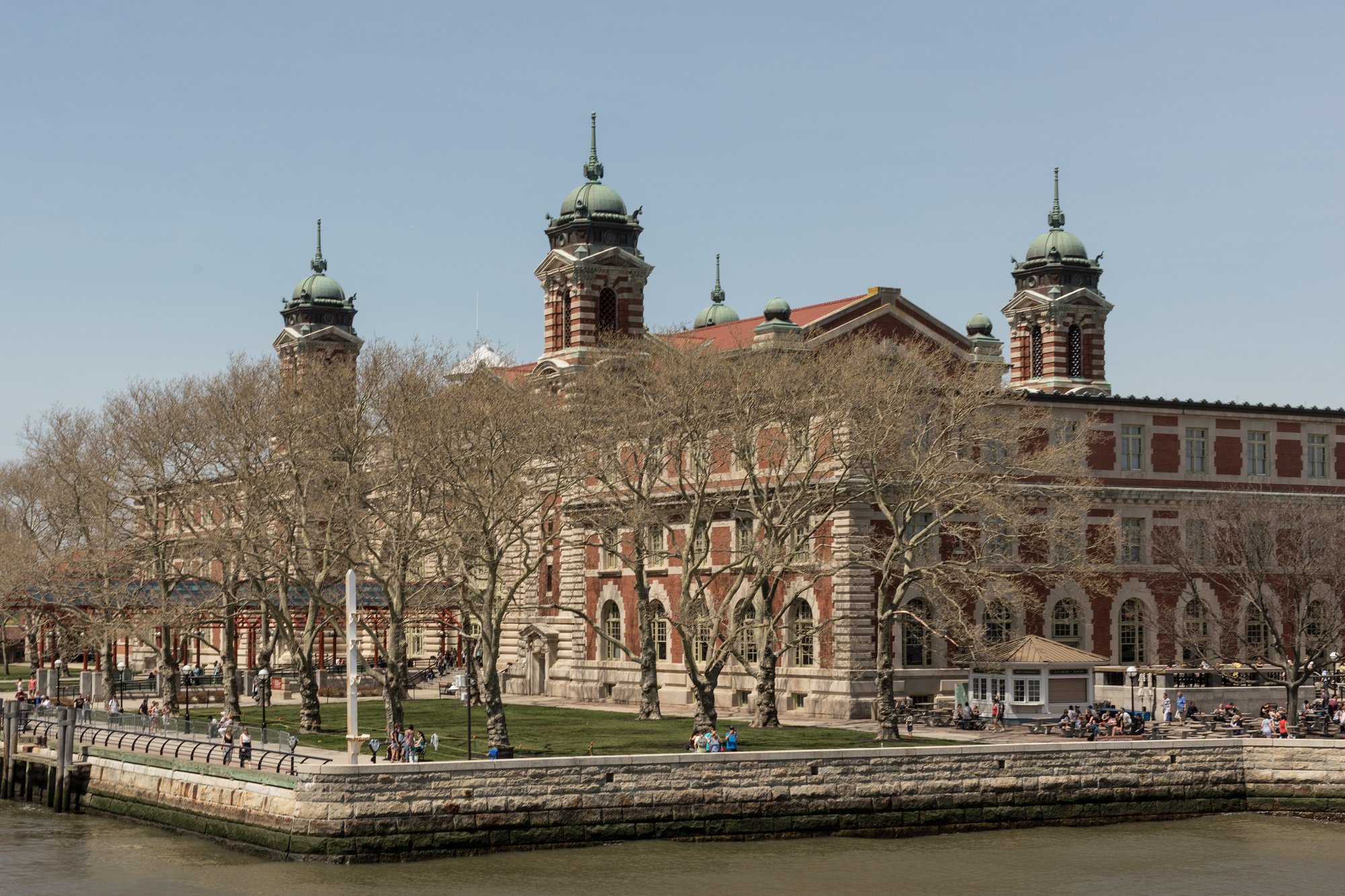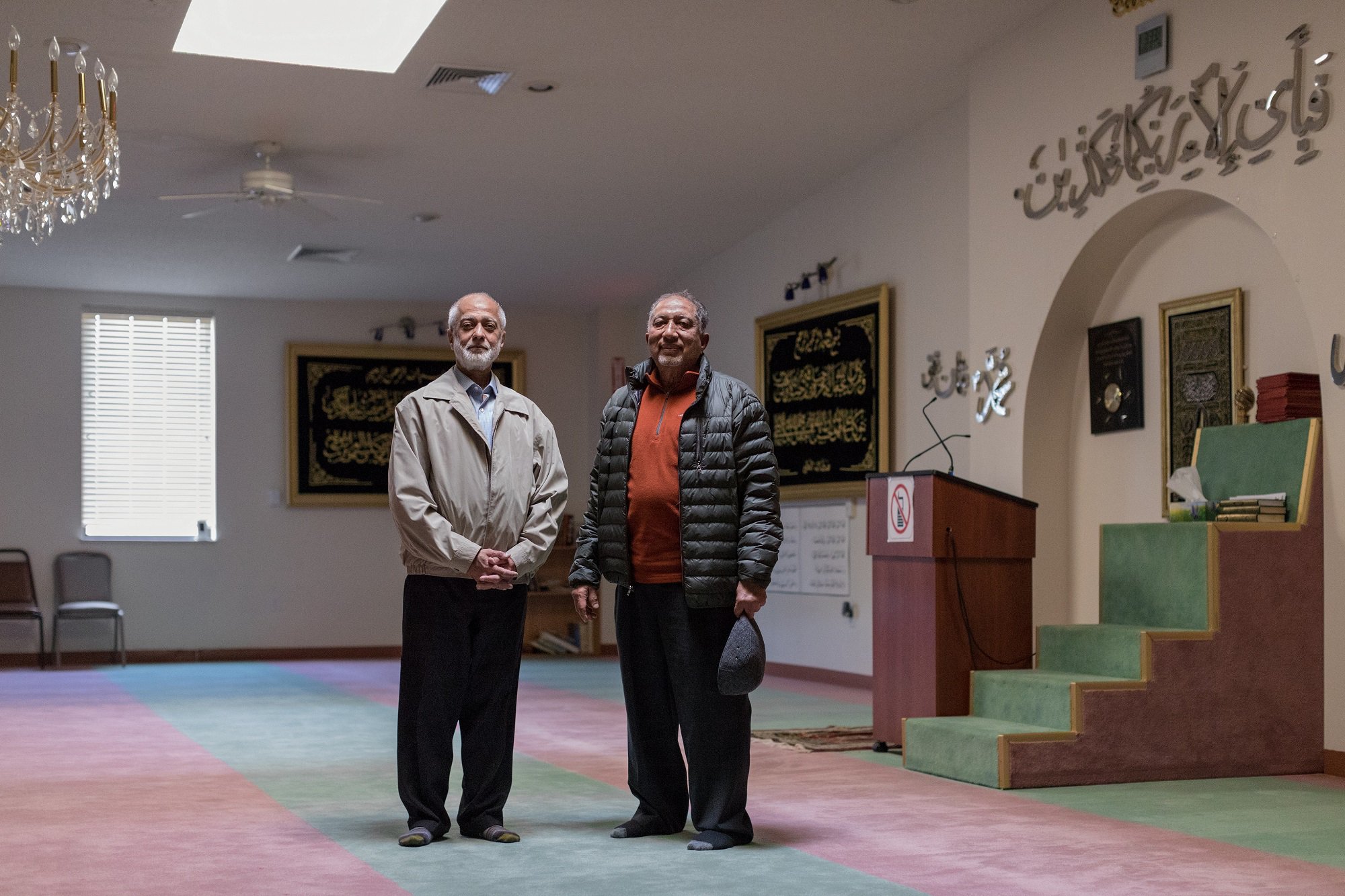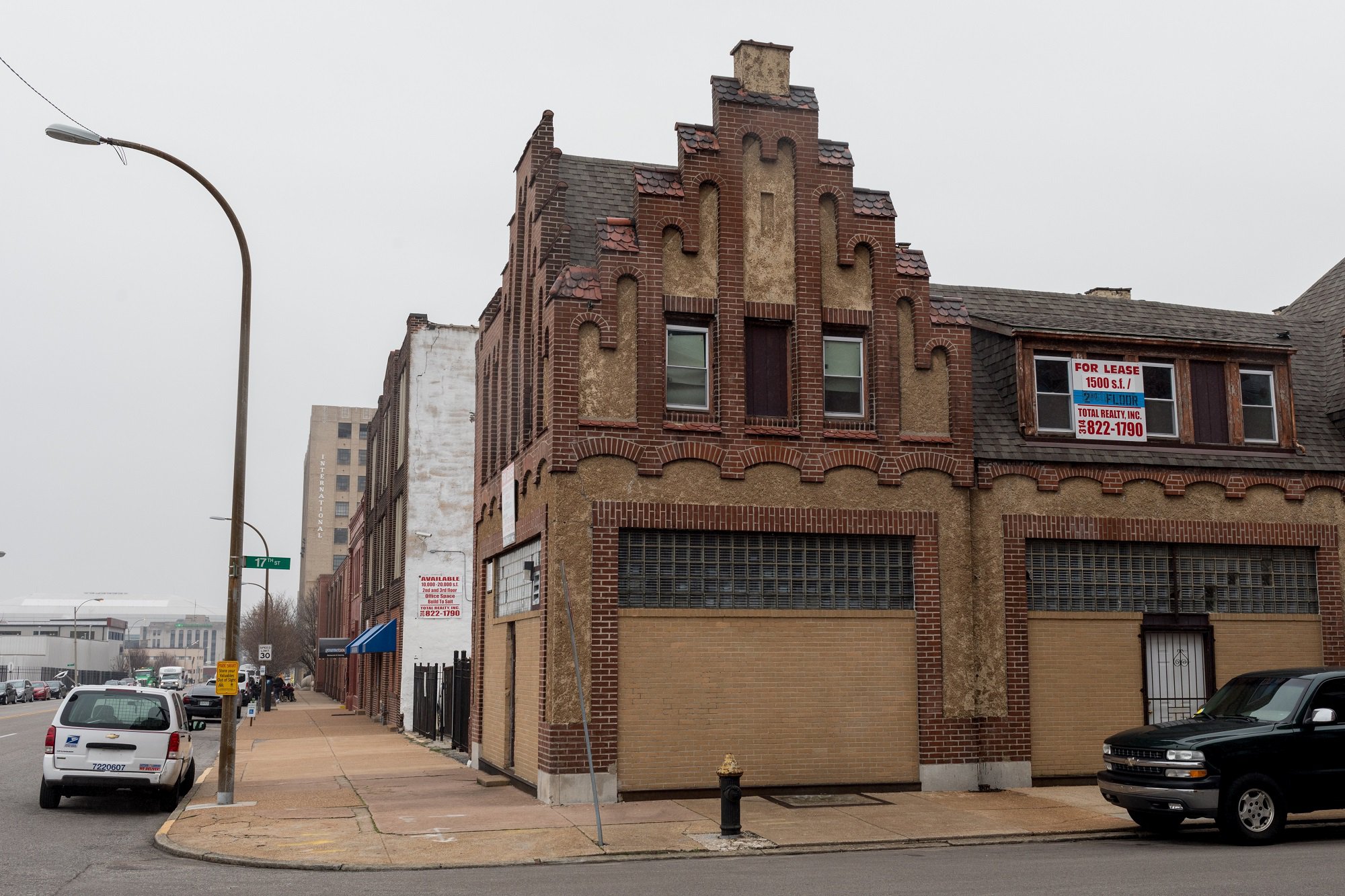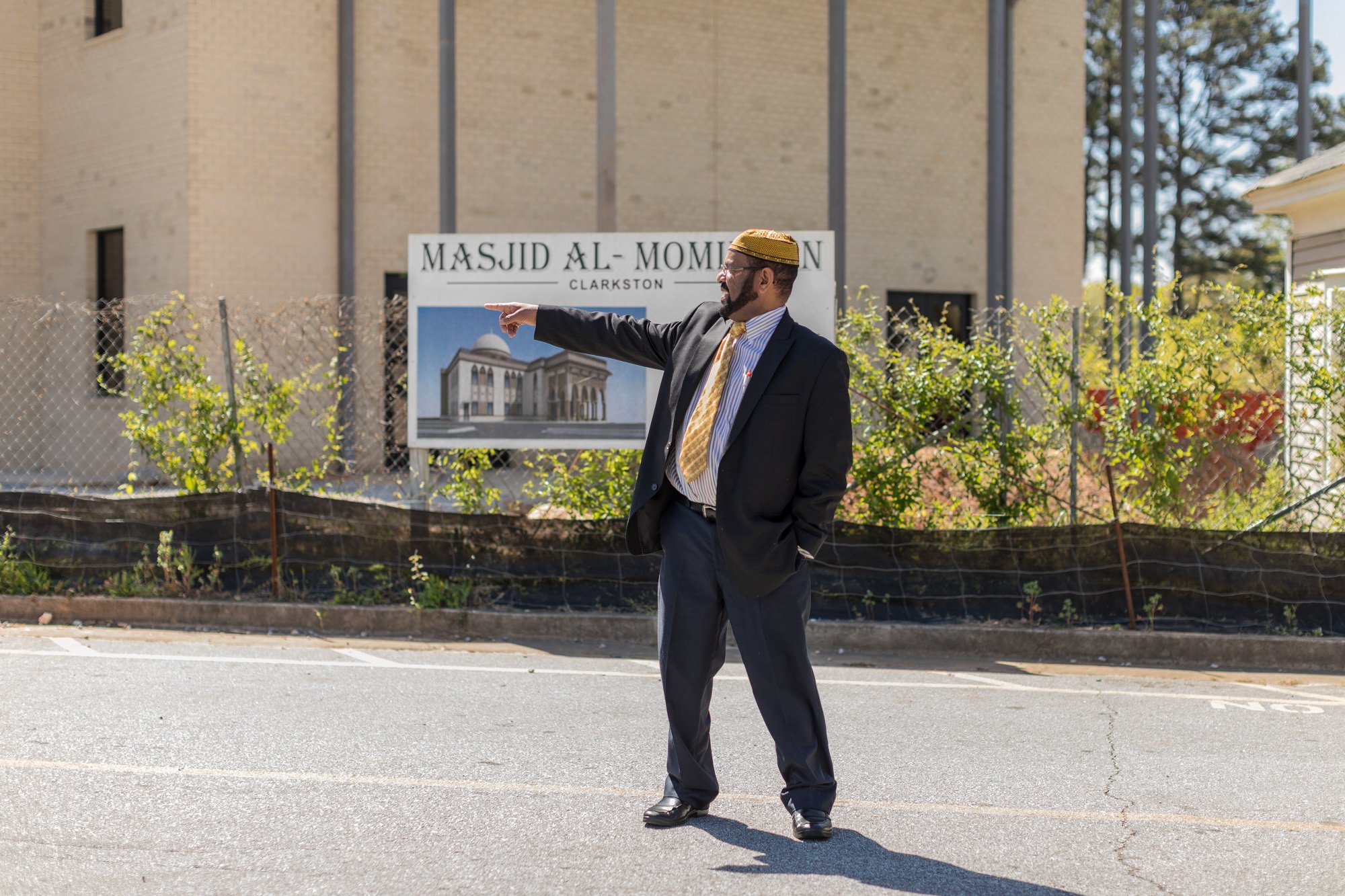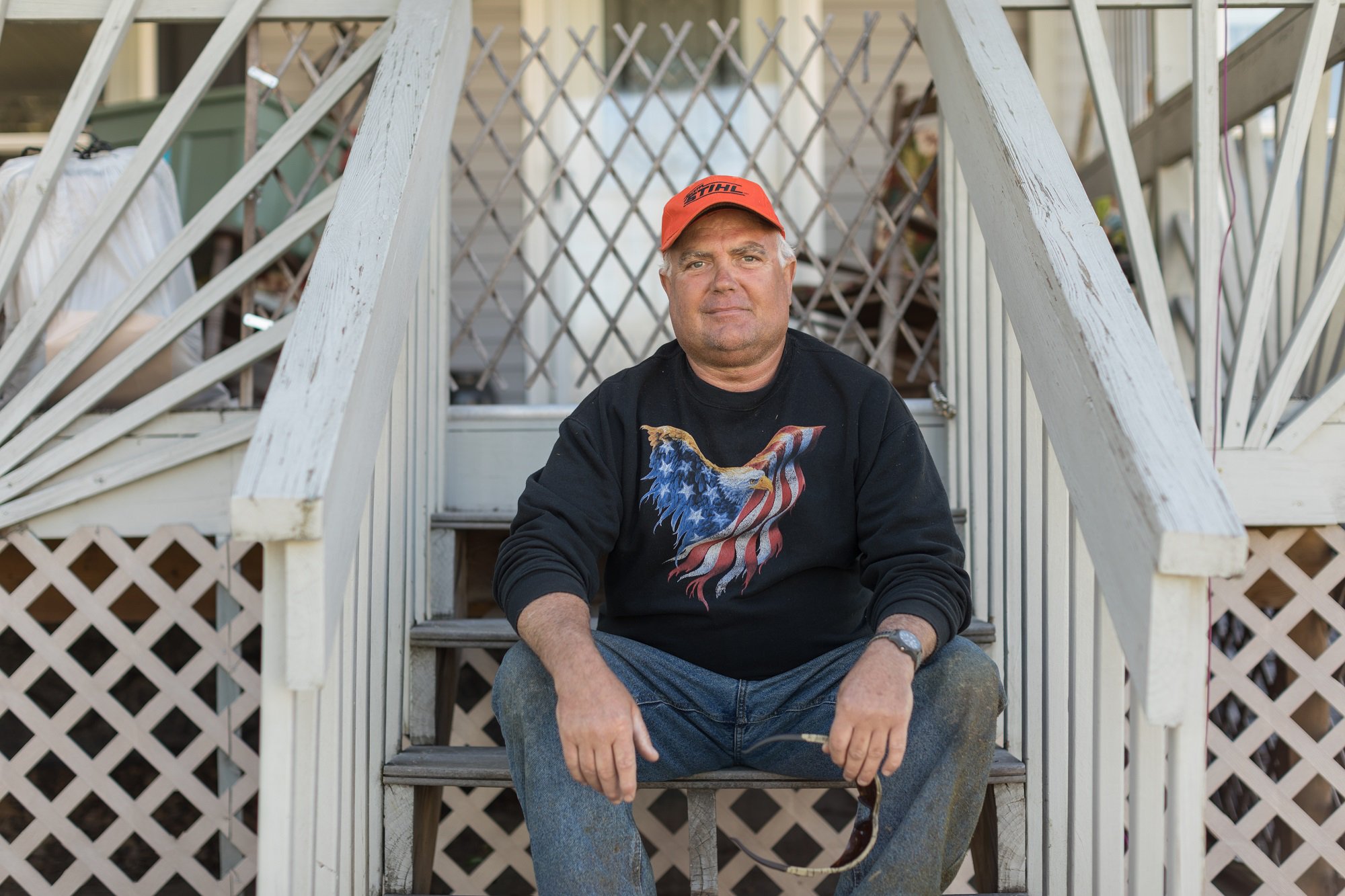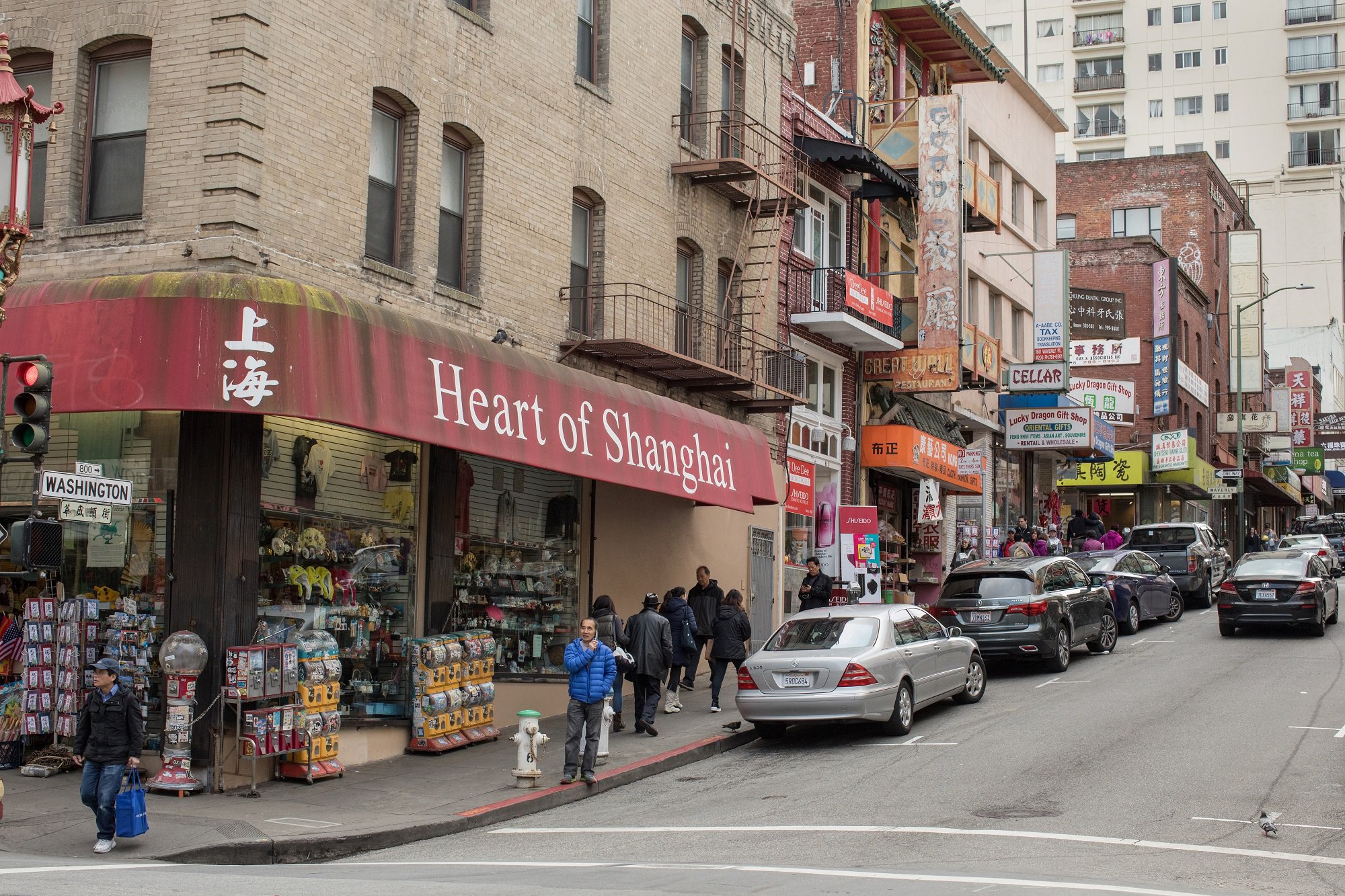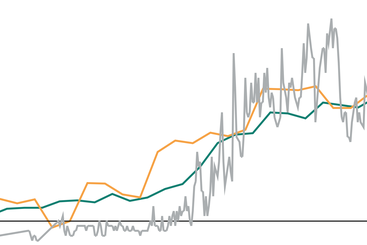Sixty years ago, John F. Kennedy presented his vision of an America proud to be a ‘nation of immigrants’. His campaign helped shape the 1965 Immigration and Nationality Act, opening America’s doors to the world. But in 2018, in the age of a very different President, immigration is presented as a problem, a threat and an imposition upon American generosity. Immigration policy is focused on exclusion and separation – the building of walls, issuing of travel bans, separating of children from their parents.
I’ve studied immigration and refugee issues for over a decade. Then, in 2014, I became an American immigrant myself. As debates on immigration in the US became increasingly fraught, I found myself wanting to understand better how immigration has shaped – and is continuing to shape – American identity. So, in March 2018, I left San Francisco and spent the next two months driving cross-country to New York City. Along the way, I spoke to dozens of people of every political persuasion and background, listening to their thoughts about immigration and what it means to be an American citizen today.
This trip was both professional and deeply personal. I am a very privileged American immigrant: I am white; I speak English; I have a green card; I am a citizen of not one but two countries. But even though I often pass as an American – at least until I open my mouth – I am not. And in 2018, it is no longer clear how I fit into the stories the current government tells about who belongs here.
As I travelled across America, I asked everyone I met for their thoughts on immigration, recording both their voices and my own reflections. And in visiting towns and cities over the country, I discovered a broader immigration story. A story less about vicious political minorities (however much power they might wield) and more about everyday communities. A story less about hostility, and more about pragmatism and hope.
I believe we need to build on these narratives, if the hostility at the heart of current American immigration policy is to be reversed. Immigration cannot be reduced to paperwork, quotas and polling. We need to tell the whole history of America’s immigration story. We need to focus on how immigration affects not just multicultural metropolises but small towns and rural economies. And we need to reconfirm the civic heart of American identity, as well as recognising how much work needs to be done to make equal citizenship a reality.
When we talk about immigration, we almost always talk in the present tense. Migration flows are ‘unprecedented’; they demand ‘immediate action’ and an ‘urgent response’. Sometimes we look forward – foretelling the disasters to come if we do not act, or promising something better if we can liberate ourselves from our worst fears. But we rarely look backwards.
As a result, while tens of millions of Americans would proudly claim to be from a ‘nation of immigrants’, far fewer know the history of that phrase or its implications. Many people I spoke to had only vague ideas about the role immigration had played (and plays) in shaping America and drew sharp lines between the past and the present – ‘My ancestors came legally back then’.
Pastor James Tremell, First Southern Baptist Church, Bakersfield, California, talking about current immigration to the area. His grandparents migrated from Oklahoma.
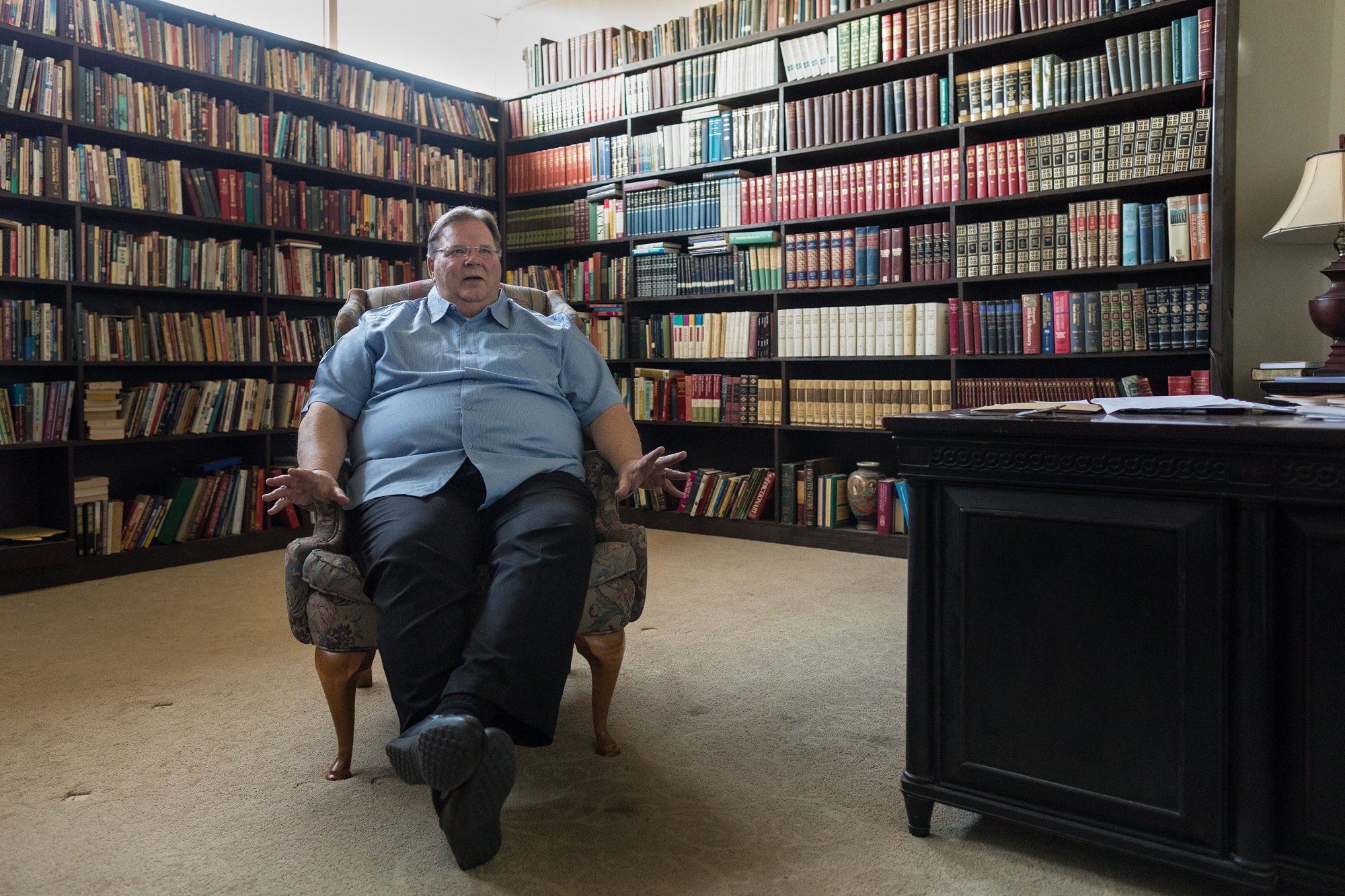
I would say that, with the influx of immigration, there are those who want to work, who aren’t looking for a handout and aren’t looking for somebody to take care: they’re looking for an opportunity. Whether they’re Hispanic or Canadian or Swedish – it doesn’t matter. If they’re coming for the purpose of contributing that’s one thing. If there coming for the purpose of getting, that’s something else.
I know the argument could be made, ‘Well, isn’t that what you just said about the Okies coming to California – that they were coming to get?’ Well, they were coming to get an opportunity, they weren’t coming to deprive anybody else of their opportunity.
But if the problems – too much immigration, or too many restrictions – are so immediate, why does the history matter?
In a time of ‘fake news’, history guards against hyperbole. President Trump has frequently shown a wilful disregard for inconvenient facts in the pursuit of his immigration policies, from claiming that millions of immigrants vote illegally, to insisting Christian refugees were refused entry to the US.
Yet history tells us that the numbers of immigrants arriving in America today are not unprecedented, but match the numbers who arrived at the turn of the 20th century. History tells us that most of those who arrived were relatively poor. And history tells us that many were members of persecuted ethnic and religious minorities who were feared and hated, like Irish Catholics and Russian Jews. In other words, immigration in America is hardly new, nor is hostility towards these new immigrants.
For just as the idea that today’s immigration is ‘new’ or ‘unprecedented’ is false, so too is the claim that America’s doors were once open to all corners. Liberals point to Lady Liberty and her protection of the early 20th century ‘huddled masses’ as proof. But there was never a golden age of immigration in America: xenophobia has always played a role in her politics.
For instance, many romanticise Ellis Island, the landing station for all New York immigrants from 1890 through 1954. They praise the fact that 98% of those who arrived were accepted. But this ignores the fact that throughout its entire period of operation, there was a near-total legal prohibition on Asian immigration. Or that from 1917 onwards, literacy tests and national quotas made immigration for manual labourers and those from Southern or Eastern Europe virtually impossible.
The acceptance rate at Ellis Island was so high because the migrants who arrived had effectively already been pre-screened, frequently using explicitly racist criteria. The legislation that enabled such restrictions – such as the 1924 National Origins Quota Acts – reflected the views of the American public. The victims of the two worst mass lynchings in American history were Chinese and Italian immigrants.
David Lei, a Chinese-American community leader in San Francisco, California, discussing Chinese residence to the Exclusion Acts from 1882.

Defining what makes you an American was a Chinese case, and that’s the story about the 1882 Exclusion: it was the organised pushback against this unfair situation for the Chinese, so they hire the best lawyers money could buy and brought up suit after suit. The Chinese population in America at the time was about 105,000 and in California alone there were 10,000 lawsuits against the US government over immigration issues and civil rights issues – this is 9% of the Chinese population in America that hire a lawyer to sue the US government.
History also shows us that America’s immigration story is not just about those who moved willingly. Millions were forced in, out and around America: Native Americans were forcibly displaced from their homelands, often under horrific conditions; at least half a million African slaves were shipped to the US; enslaved families were separated and uprooted during the Jim Crow era; and over a million American citizens of Mexican descent were deported to Mexico in the 1930s.
Inclusion, in other words, has not come easily to America’s newcomers – nor to many of her natives. But this conflict is an integral part of the history of American integration. The struggle for inclusion marked the arrival of Polish woodcutters in 17th century Jamestown as much as Syrian refugees in 21st century Atlanta. In New York City, the quintessential immigrant’s city, I repeatedly heard the observation that the first generation of newcomers are only ever tolerated by locals; it is their children who, in the end, become Americans.
Tyler Anbinder, Professor of History George Washington University and author of City of dreams: the 400 year epic history of immigrant New York, talking about integration in New York.
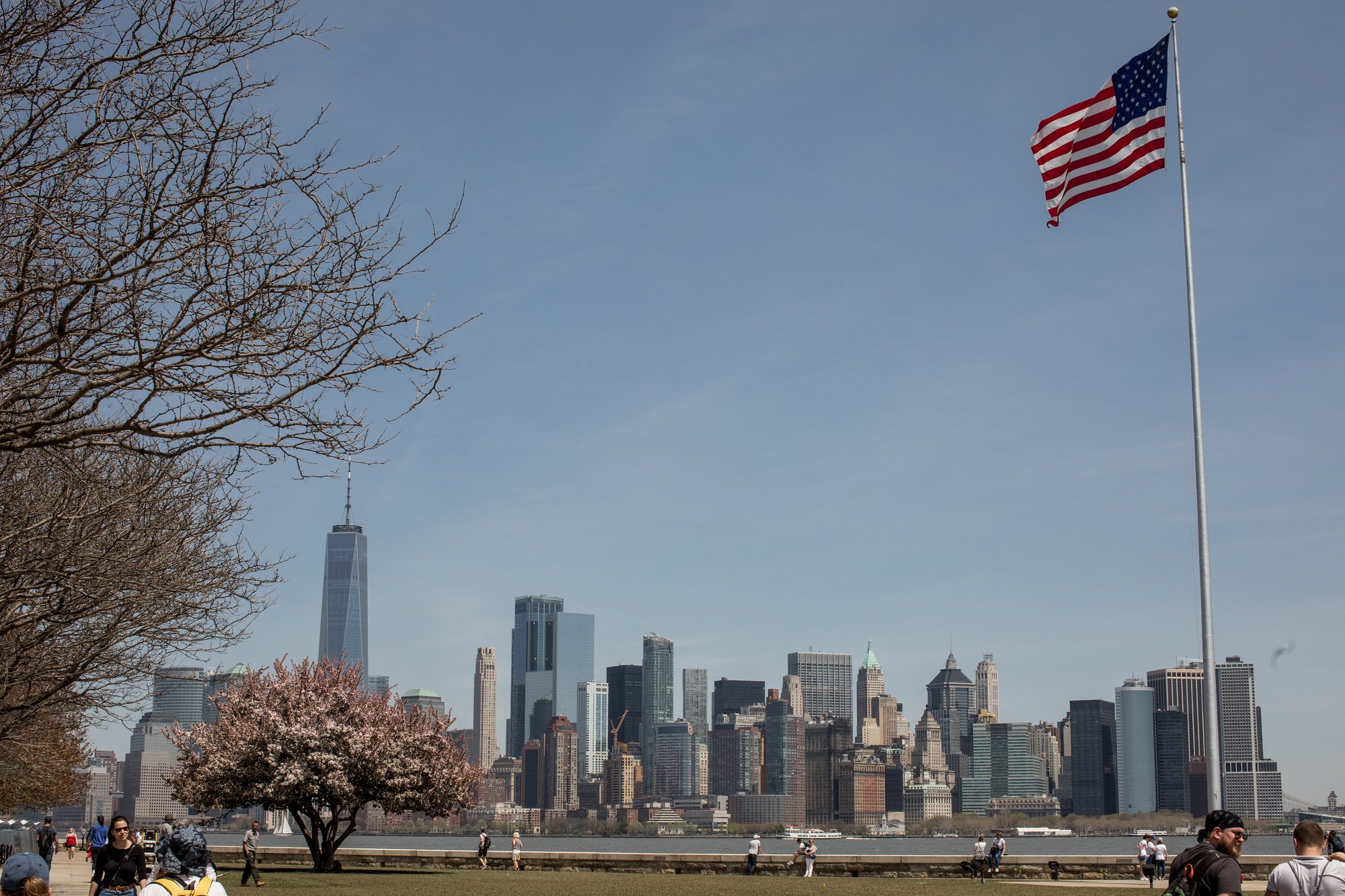
Most people who immigrate as adults, I don’t think have very much of a New York identity: they tend to live most of their lives thinking of themselves as Italian or Irish or Greek, and when they use the word ‘home’ that’s the place they’re referring to, not the United States. And it tends to be more their children. Even if their children come as immigrants but they come as children, that tends to be the first generation that thinks of themselves as Americans and thinks of themselves as part of a melting pot.
Every generation of Americans – like Americans today – has believed that their immigrants are different than immigrants who came to the country in the past. A lot of Americans today believe that today’s immigrants can’t become true Americans because not enough of them are Christians, not enough of them speak English, not enough of them are well educated, and that they don’t have the same values as native-born Americans. But every generation of Americans has believed that about their generation of immigrants.
When John F. Kennedy called America a ‘nation of immigrants’ in 1958, his statement was not simply historical: it was aspirational, a call to acknowledge the often-over-looked contributions of the often-unwelcome immigrants who had powered American industrialisation. His op-eds in The New York Times were intended to marshal support for a radical overhaul of immigration law, reforms that would result in the 1965 Immigration and Nationality Act. A complete description might acknowledge that while America is a nation of immigrants, it has never been a nation that welcomes immigrants easily, or without reservation, debate and uncertainty.
‘We must tell these histories whole’ – Kevin Jennings, Director, Tenement Museum, New York City
What does a more complete history of American immigration look like? Certainly, immigrants, in every way, built this country. You can see it in the architecture of New Orleans’ shotgun houses and the railroads across the West. It is to migrants that we owe the right of Americans to move freely across the US (confirmed by a migrant case, Edwards v. California, in 1941). Even the very definition of what makes anyone an American, conferring citizenship under the 14th Amendment, resulted from Wong Kim Ark’s case, brought by immigrant advocates to the US Supreme Court. This identity was then fought for by immigrants – by the German and Irish soldiers fighting in the Civil War, to the Latinos who today serve disproportionately in the American armed services.
But heroic acts make myths, not history. Far from cultivating it, America became a nation of immigrants in spite of itself. Immigration has always been the source of tension, debate and anger. The first travel ban was placed on the movement of free black men after the Haitian revolution in 1806. Chinese exclusion began in 1882 and lasted 60 years; by 1960, there were hundreds of thousands of Chinese immigrants living illegally in the US. Japanese American citizens were interned for years during the Second World War. America has always been anxious about immigration; America’s immigrants have always faced racial and religious prejudice. It is hard not to see parallels to today’s Muslim travel ban, or cuts to refugee resettlement.
This is the history that needs to be told: a story of imperfect inclusion and integration. Such narratives can challenge broad negative assumptions about the motives or experiences of today’s immigrants. Bakersfield, California, one of the most conservative cities in the country, is home to large numbers of Americans descended from the Okies, who travelled West as destitute labourers in the 1930s, only to meet police patrols and discrimination at the California border. Encouraging a discussion of the parallels between this experience and the experience of Mexican farm workers today can help to bridge the othering of immigrants by reminding natives that their grandparents were once unwelcome migrants too.
History can also facilitate a less emotionally charged conversation. By talking about Chinese exclusion or discrimination against the Irish we can find proxies for today’s questions that offer greater opportunity for rational discussion. It is easier to spot injustice in hindsight; easier, too, to recognise the possible reasons for holding an alternative viewpoint. ‘What would you have done?’ becomes a stepping stone to ask: ‘What should we do now?’
Telling the history of American immigration matters in more fundamental terms too. The histories we tell ourselves create our identity for good or for ill: as individuals, as families, as nations. And what could be more fundamental to the history of a people than the history of who belongs and how they came to be here? Immigration, as Oscar Handlin wrote in The Uprooted, is the story of America. But America risks delusion – to be found in both strident nativism and self-satisfied liberalism – if it only hears part of that story.
Soon into my journey, I realised that there is often a contradiction between the ways in which we talk about the impact of immigration in abstract, national terms, and how we actually experience it locally. And this contradiction has life-changing impacts on migrants and host communities alike.
America – a federalised collection of states stretching across a continent and home to some 300 million citizens – is arguably the quintessential ‘imagined community’. It did not spring into being as 48 contiguous states. The US–Mexico border was established through processes of annexation and conquest: those resident in California and the Southwest were Mexican long before they were American. There, the Spanish language is not a recent import.
No, America is a nation arguably held together by a scrap of paper and some lofty ideals about freedom and the pursuit of happiness. And this understanding of national identity is intimately connected to our ideas about immigration. Immigration touches not just on who belongs, but how we collectively belong together, and whether we chose to measure this ‘belonging’ in terms of values, language, skin colour or religion.
Najir Zaharia talking about identity. He arrived in Nashville aged two in 1977, resettled from a Kurdish refugee camp in Turkey.
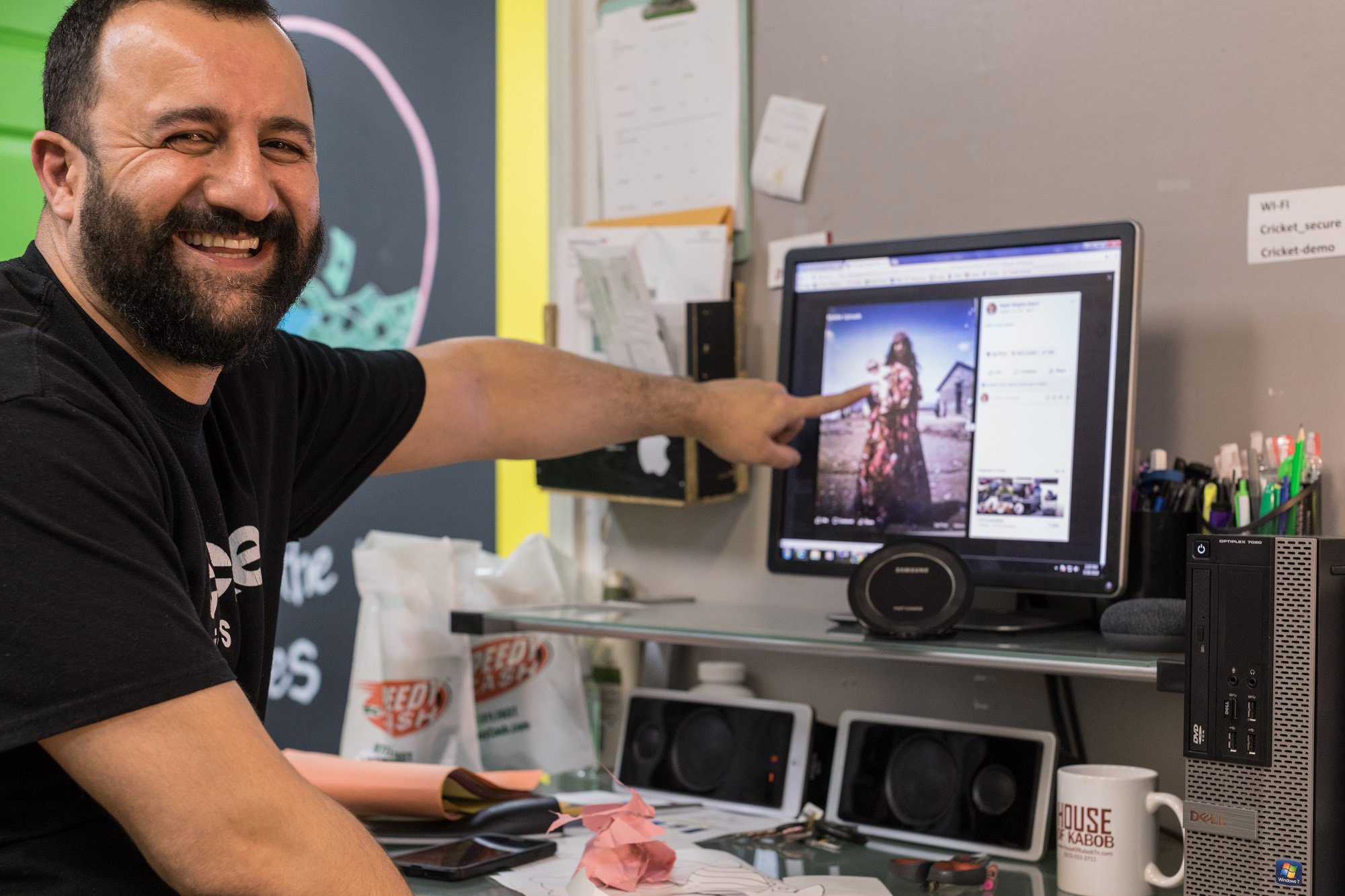
I’m American: I’ve been here since I was two years old, I love Nirvana, I love country music, I love rap music, I love everything about America, you know, the food ... My wife is American but I’m Kurdish too so I guess you’re right – I would say 50:50 – but I think I’m American before I’m Kurdish.
Yet describing immigration in national terms cannot possibly capture the diversity of those 300 million lives. There is no single American ‘immigration experience’. This seems obvious, but it’s a fact that bears emphasising; too often, contemporary political debate ignores the vast differences between states. Take, for example, California and Mississippi. In California, one in four residents are immigrants, the majority of children have at least one immigrant parent, and there is no ethnic majority, while in Mississippi, only 2% of the population are immigrants, and the Great Migration of African Americans in the 20th century reinstated a white majority.
As I travelled, the themes that dominated national immigration debates seemed at times entirely divorced from local realities preoccupying average communities. For instance, the US–Mexican border wall – and the imagined deluge of ‘illegals’ crossing through the gaps – were both symbols that only grew in stature the further I travelled from the border. So, on Alabama’s Gulf Coast, business owners (themselves dependent upon seasonal migrant labour) strongly supported plans to build the border wall. In West Virginia, locals I talked to were similarly supportive of the need to stop a ‘flood’ of illegal immigration by building the wall – despite acknowledging they knew of no actual Mexicans currently living in their own neighbourhood.
But closer to the border in California, where the wall was no longer an abstraction but a physical reality slicing through the desert, views were more nuanced. Those on both sides of the debate told me they saw wall-building drama primarily as political theatre for a long-distance audience. In towns like Calexico – effectively a US suburb of the much larger Mexicali on the Mexican side of the border – schoolchildren and workers cross the border every day. Lives are lived on both sides. Even in California’s Central Valley – a Trump stronghold in an overall democratic state – the inevitability of cross-border movement was apparent even to those who wanted change. For how else could California’s agribusinesses survive?
Rick Wartzman, director of the KH Moon Center for a Functioning Society at the Drucker Institute, California and author of Obscene in the extreme: the banning and burning of John Steinbeck’s Grapes of Wrath, talking about attitudes among the descendants of Oklahoma migrants in the Central Valley to today’s migrant farm workers.
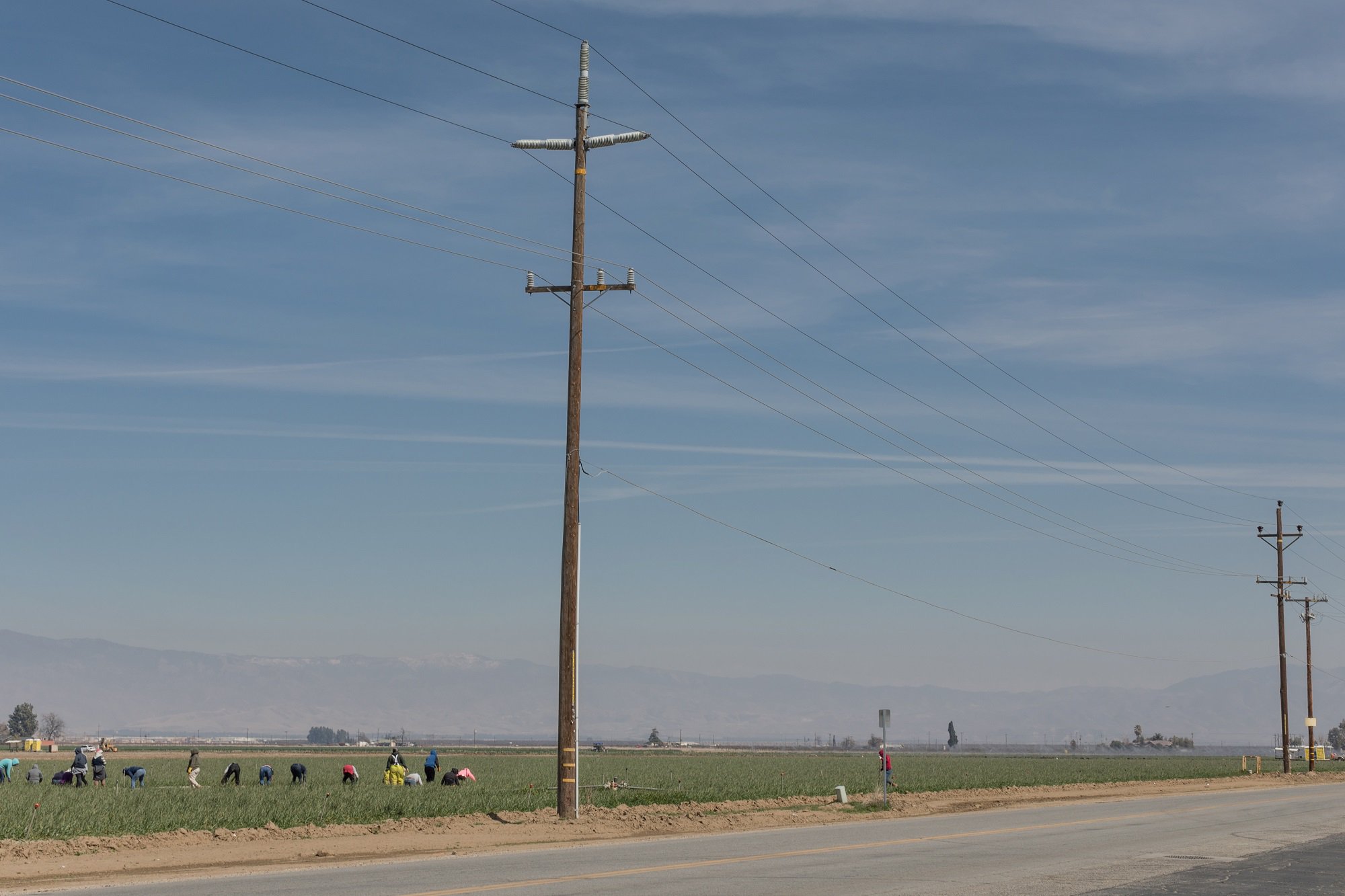
Big farmers are dependent on a steady, dependable flow of migrant – mostly undocumented – labour. And so many of them, I know, voted for Trump, and yet many of them voted for Trump thinking: ‘He’s going to do a lot of things I like, like cut regulation and be anti-environmental law in a way that’s hurt me, and shares many values that I hold – or at least says he does – and at the same time I’m betting that he’s not actually going to sweep through our fields with ICE agents and haul our workers away.’ And they’ve kind of rolled the dice on that.
Ignoring these distinctions between national rhetoric and local realities can have real policy significance. With a government focused on appealing to its populist base, who are concentrated in states with low levels of immigration, the needs of communities seeking to attract immigrants have been side-lined.
I spent three days in St Louis – a city whose population has shrunk by two-thirds since 1950. Here, local business leaders and community organisers are convinced that the city’s future survival depends, in part, upon attracting more immigrants to fill its empty housing and revitalise the economy. The arrival of 20,000 Bosnian refugees in the 1990s provided a welcome population boost, but federal refugee resettlement programmes have been slashed since 2016. Hi-tech firms like Monsanto, headquartered in St Louis, are eager to attract global talent. But the tight limit on the number of highly skilled H1-B visas available, coupled with slowdowns in visa processing, mean that St Louis must compete against other American cities for a circumscribed number of workers. The promise that limiting immigration will Make America Great Again may seduce a national audience, but in cities like St Louis – desperate to reverse post-industrial decline – it may in fact achieve the opposite.
It also matters which local realities we’re talking about. In recent years, policy-makers have extolled the role of cities in meeting the challenges of immigration and fulfilling the potential it can offer. This is true: almost all of America’s thriving cities are spaces of global diversity, and it is impossible to imagine San Francisco or Chicago, New York or Miami, functioning without their immigrant communities. But travelling by road allowed me to also escape the usual settings for such conversations about integration and inclusion, heading into the interior where migration is often presented as something that happens elsewhere.
Here, in these small towns and rural communities, whole industries depend on immigration and migrant labour. The connection between the meatpacking industry and refugee resettlement, for instance, has profoundly shaped towns like Cactus, Texas, where today, one in four residents is a resettled refugee and almost all the rest are migrants, holding various legal statuses. I was awed by the welcome extended by the school and community centre to these newcomers.
Such towns offer an alternative to the ‘cosmopolitan urbanites vs rural salt-of-the-earth locals’ oversimplification. Places like Clarkston, Georgia, have sought to welcome newcomers, sometimes as a simple matter of hospitality. Clarkston has already gained some notoriety for its success in greeting hundreds of new migrants and resettled refugees each year – diversity has become a central component of the city’s development strategy and its plan for future growth, and this reputation is now attracting white Americans into the city too.
Of course, the absolute numbers of migrants settling in such rural places is small, but in relative terms the impact can be considerable. More difficult, is how to turn rural immigrants into permanent community members. In Bayou La Batre, Alabama, a quarter of residents are Indochinese: they are widely credited with saving the seafood industry from a labour crisis in the 1970s and 1980s. Now, 30 years later, their children have left to seek professional careers in the cities. There’s a symmetry here with the story of the Muslim doctors – mostly from India and Pakistan – who settled in Western Virginia in the 1970s, raising families in the area. Their children have now left, driven away by West Virginia’s fading economy.
Travis Stringfellow, business owner in Bayou La Batre, Alabama, talking about the arrival of Vietnamese refugees in the 1970s.
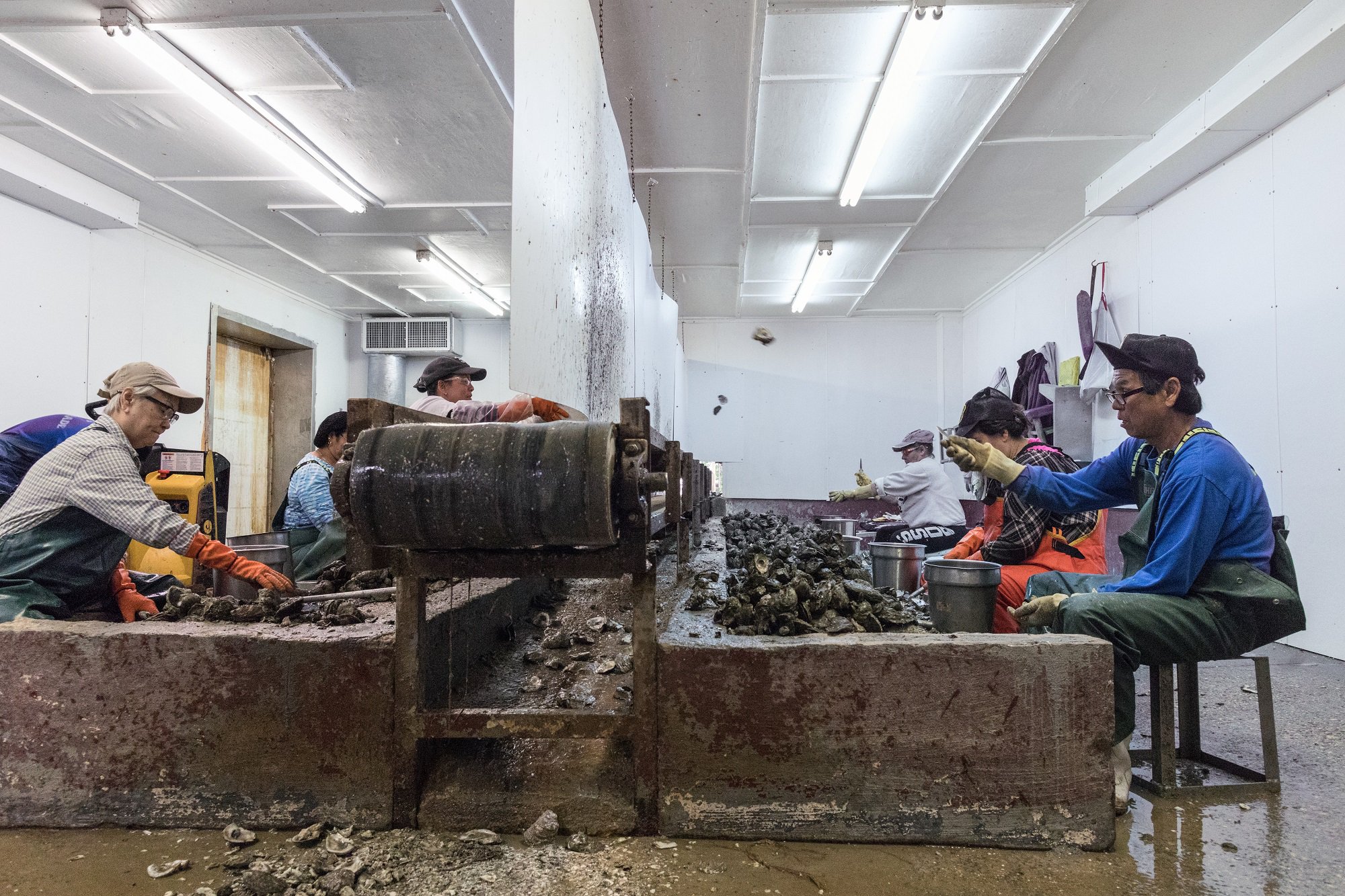
Vietnamese were the boat people – they came over in the ’70s. That’s when I was a little fella, I remember that. I think they came over around ’77 or ’78, something like that? I can remember this town was not like this; it was a little-bitty town back then. We had probably five or six hundred boat people come straight from Vietnam, straight off the boat. All of a sudden you had this little town of nothing but people that you knew – maybe a thousand folks – to these women with these great big rice hats walking down the road and riding bicycles: it’s a whole new culture brought in.
These intergenerational tales are a reminder that, while immigration can sustain rural industries, most immigrants do aspire to a better life: few want their children to work as meatpackers too. The emptying out of rural America is neither caused – nor will be halted – by immigration alone. But new immigrants will work in difficult, brutal and largely invisible industries like meatpacking, feeding America’s hardworking families their chicken nuggets and beef burgers. Americans will not.
I ended my drive convinced that national-level policies on immigration and integration are doomed to failure. Already there are vast differences in the welcome that irregular immigrants receive across the US. In California, for instance, a state-wide ‘sanctuary’ law is in place and those without status can apply for a driving licence and pay in-state tuition fees at state universities and colleges. But across the border in Arizona laws demand the opposite: local police must verify federal immigration status. Given these widening gaps, is there a case to be made for following Canada and making room for individual states – or even cities – to create their own immigration policies?
So, if immigration is a local issue, where does this leave the idea of ‘America’? From San Francisco to New York, I asked nearly everyone I interviewed, regardless of their own immigration story or status, what being American meant to them.
From native-born citizens I got the same answers: it means ‘freedom’, a chance to make a better life. Phrases learnt by rote at school? Undoubtedly. But they’re also an opening – values that are entirely compatible with welcoming newcomers. And critically, while language was important, no one I spoke to saw race as a disqualification.
From immigrants – including naturalised citizens – the answers were more complicated. For many, being American was a question of legal status, holding the papers that guarantee safety along with citizenship. Adult immigrants were often fiercely determined to hold onto their cultural nationality, resisting inclusion in mainstream America. But they all branded their children as ‘100% American’ and ‘totally Americanised’. This group reflected the diversity of the country, ranging from Kurdish–American gun-rights advocates with southern drawls in Nashville, to Dominican–American herbalist human rights activists in Brooklyn.
Sometimes I found these conversations uplifting. For all the talk about walls and deportation, I found the American public remarkably open to the idea of immigration continuing – far more so than those in Europe. The idea of what constitutes a ‘good immigrant’ may be narrowly circumscribed (you must come legally, work hard, pay taxes, build your own life) but there was no expectation that immigration would stop. This is backed up by polling data: while 80% of Trump supporters want to build a wall, over half of them think that undocumented immigrants are as honest and hardworking as American citizens, and that they fill jobs Americans don’t want.
But it is equally clear this is no time for complacency or unfiltered optimism. The current government is determined to pursue restrictive immigration policies and to focus, relentlessly, on the supposed moral culpability of ‘illegals’ while pursuing cruel deterrents including family separation. In this way, the idea of an ‘immigration problem’ is driven further apart from reality.
And where does this leave the migrants themselves? As I travelled across America I became profoundly aware of just how empty the promise of ‘equal citizenship’ has proven to be, from 1776 to the present day. America was founded by a racist, slave-owning elite who expanded their country through purchase, conquest and annexation. The question ‘Who is America?’ has been contested for centuries. Welcoming immigrants is only one dimension of a much wider struggle against white American privilege. The continuing fight for civil rights is a reminder that American citizenship is not a guarantee of equality: a privileged white elite still continues to set many of the terms for full membership.
In fact, throughout my journey I was struck by the fact that the current immigration debate is often a cipher for racism. Fears about ‘losing our culture’ – often expressed to me most vehemently by middle-class, economically secure white Americans – felt uncomfortably close to the arguments I heard from some in the South, still anxious to explain away the ugly truth of the Civil War and Jim Crow as cultural phenomenon.
Of course, citizenship does not equal integration. Just as city officials spoke proudly about diversity, many immigrants continue to live in ethnically segregated apartment blocks or neighbourhoods. You can see this in New York, walking from Indian to Puerto Rican enclaves within a few blocks in Queens. You can see this in Clarkston, where cross-cultural exchanges between different refugee and immigrant groups are often facilitated by white Americans. Sometimes such segregation is necessary: places like San Francisco’s Chinatown can play (and have played) an essential role in ensuring new immigrants find their feet.
Such segregation goes to show that the cosmopolitan liberal, middle-class version of ‘diversity’ is not a model that many immigrants can or choose to participate in. Cross-cultural exposure is not enough. (One of the most visually arresting moments of my entire trip was when, travelling through Noel, Missouri, I rounded a corner to see two Confederate flags hanging from the front porches of bungalows, and two Somali women in hijabs crossing the road.) But I think it is how you begin to move from tolerance to interaction.
This is the paradox I see at the centre of the debate about American immigration and identity. Everyone agrees that almost anyone can become American. But at the same time American identity is fragmented by race, class and language. Many different groups of Americans – even in supposedly diverse regions – live their lives separately. Power, particularly political power, remains concentrated in white hands.
Given all this, it is easy to wonder why anyone would choose to become an American. Who’s foolish enough to believe, in 2018, in the American dream? But sitting in a courtroom in Roanoke, Virginia, I watched as 100 immigrants became American citizens and saw how much it meant to them.
US Citizenship Naturalization Ceremony, Roanoke, Virginia, 20 April 2018.
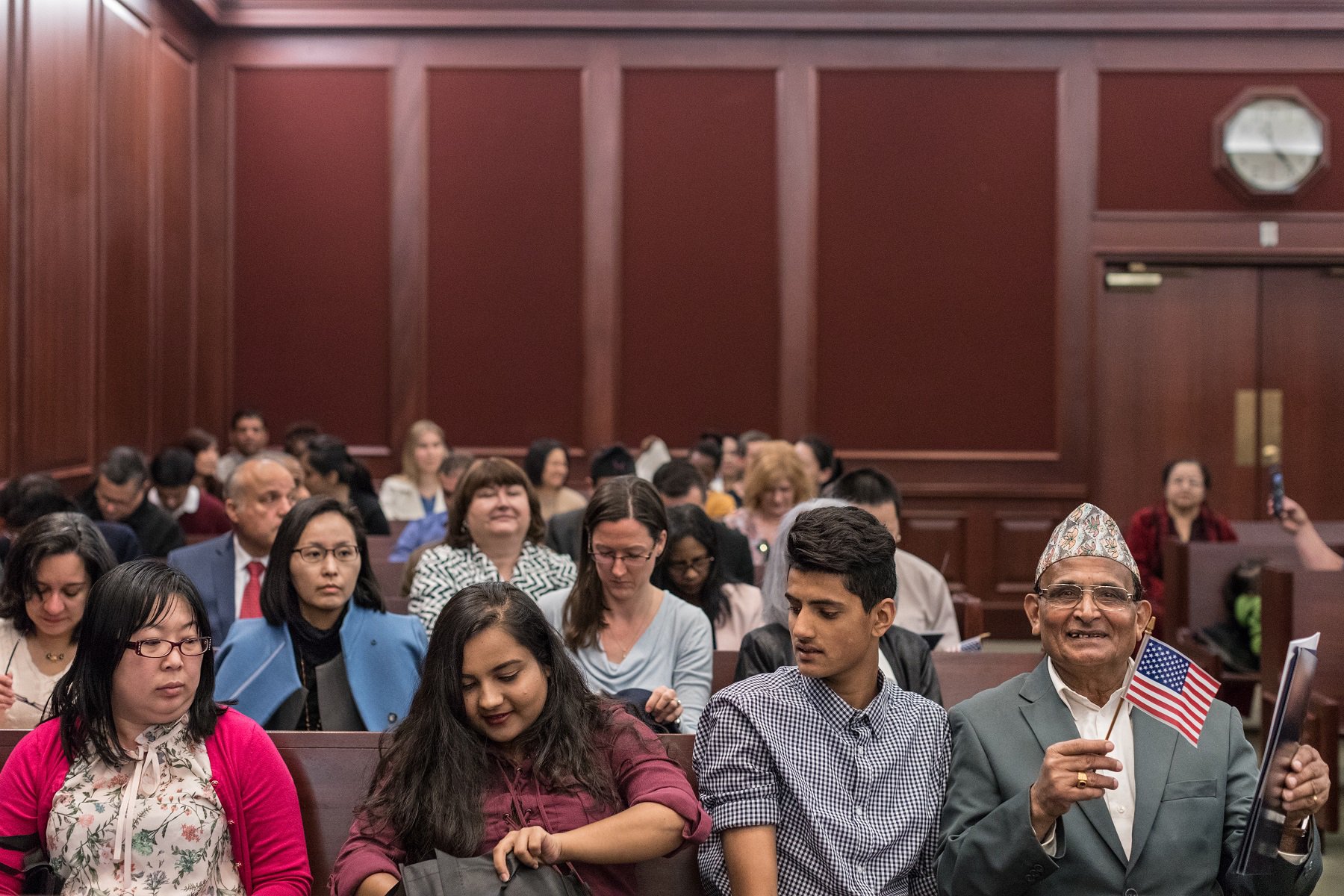
Judge: Now we can all call you United States citizens, congratulations.
[clapping]
Judge: Any of your family or friends that would like to say something … I saw this gentleman give one of our newest citizens a big hug.
Audience member: I am very emotional in this situation as I just became a citizen myself five years ago. I want to say thank you to this great nation, I wanted to say thank you for my dad – he’s the one that brought me here 17 years ago and we’ve been through a lot, it’s been a long 17 years and we finally made it.
Some were refugees who had fled violence and terror; some were students. Some were elderly and infirm. But all talked about the chance America had given them to make a better life. Many talked about how America had given them freedom – knowing far better than the native-born Americans I had talked to what freedom meant. For a brief moment, I saw how the promise of immigration and the promise of America were inextricably linked, despite all their respective flaws. As the presiding judge remarked (borrowing from Woodrow Wilson): ‘You enrich us if in coming you expected to find us better than we are.’
I began my journey across America in the hope that by talking to members of everyday communities – immigrants and locals, not policy-makers and politicians – I would understand more about the place of immigration in America in 2018. In the end, I journeyed through dozens of different Americas, each with their own preoccupations. There is no single immigration answer.
But I also came away convinced that America is still a ‘nation of immigrants’ – albeit with the caveat that, as Kennedy well knew, that label has not always been welcomed. Immigration in America has always been difficult, and it has always been complicated. And now, just as in 1958, we urgently need to talk more about that history, and to shift America’s current immigration conversation away from its preoccupation with borders and fear. For one thing was clear to me throughout my journey – as much in the empty Texas panhandle as in the crowds of downtown Manhattan: America, however reluctant, still needs immigrants, at least as much as the world’s immigrants still need America.
Words and audio by Katy Long. Images and video by Jessie Parks.
Learn more about Katy Long’s Journey across America, and stay tuned for news about the book. Explore more of ODI’s work on migration and refugees.
Thank you to Charlie Zajicek, Tom Alwyn, Ailin Martinez, Helen Dempster and Jessica Hagen-Zanker for their work on the project, and Joffe Charitable Trust and Paul Hamlyn Foundation for their support.
